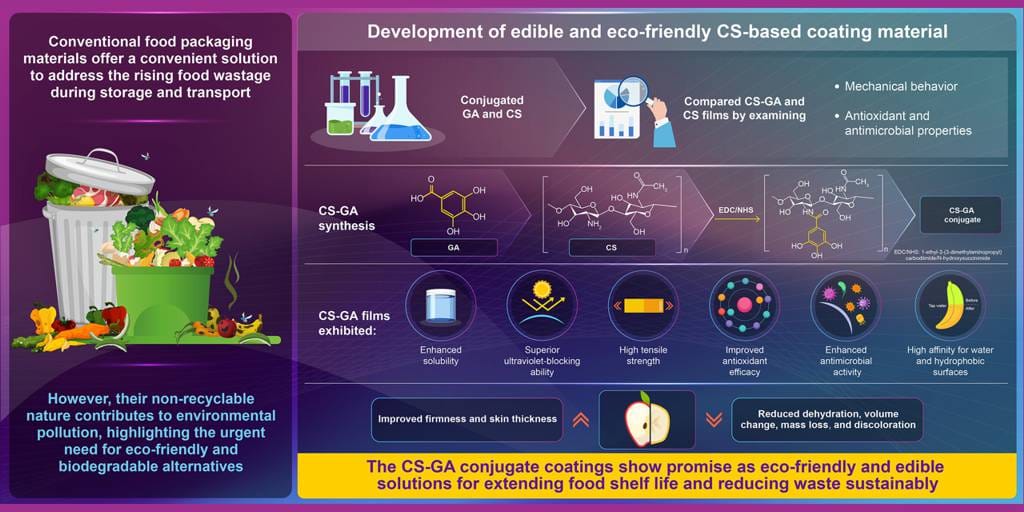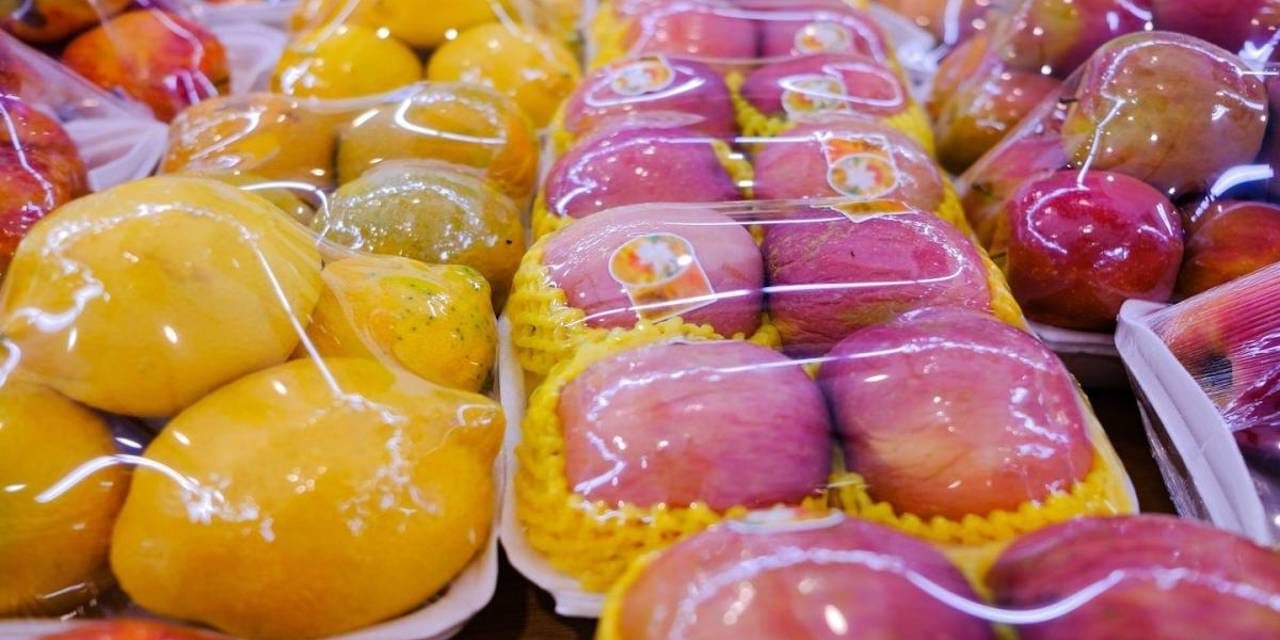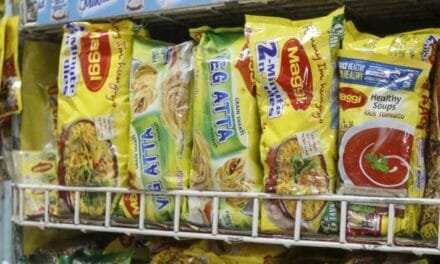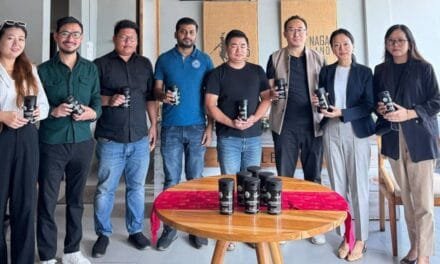These Edible Biofilms can combat food waste and boost freshness by preventing water loss and gas exchange, reducing the need for refrigeration or synthetic preservation, while extending shelf life.
South Korea, Dec. 2024: Significant improvements in transportation technology have made fresh food accessibility considerably easier. However, this progress has been accompanied by escalating concerns about food waste during transportation and storage.
The Environmental Impact of Food Waste in Transportation
Globally, around 17% of food at the retail and consumer levels is wasted, resulting in issues like groundwater contamination, hazardous gas emissions, and the spread of infectious pathogens, all contributing to environmental pollution. To develop efficient, cost-effective, and eco-friendly food preservation technologies, researchers worldwide are studying alternatives for the development of packaging materials. Among these, edible coating made of naturally occurring polymers have shown particular promise.

Chitosan: The Natural Polymer Transforming Food Coatings
These protective coatings can protect fruits from post-harvest degradation by preventing water loss and gas exchange, reducing the need for refrigeration or synthetic preservation while extending shelf life.
Chitin, a natural polymer derived from the crustacean endoskeleton, is chemically modified to produce chitosan (CS). CS is non-toxic, biodegradable, and has remarkable film-forming abilities. However, certain limitations, including weak barriers and low antimicrobial properties, hinder its potential as a food coating material.
Enhancing Chitosan with Gallic Acid for Better Food Protection
To address this limitation, a team of scientists, led by Professor Won Ho Park from Chungnam National University, South Korea, incorporated a polyphenolic compound, gallic acid (GA), to produce a CS-GA conjugate. GA is abundantly available in plants and is well known for its excellent antimicrobial and antioxidant properties.
Elaborating further about their study, Prof. Park says, “We wanted to develop a CS-based edible biofilm with enhanced food coating properties, and we were hopeful that the incorporation of GA might help achieve that.” This paper was made available online on September 16, 2024, and will be published in Volume 463, Issue 2 of Food Chemistry, on January 15, 2025.
| Also Read: Role of Edible Films and Coatings in Food Industry-I
| Also Read: Rise of Sustainable Food Packaging for a Greener Future
A Game Changer for Freshness: How the New Coating Extends Shelf Life
In this study, the team reports the synthesis and characterisation of a CS-GA conjugate film. They compared it with CS films to assess GA’s enhancement effects and tested its efficacy on stored mini bananas and cherry tomatoes.
They observed that the developed film exhibited enhanced mechanical strength, protecting against food damage during transportation, and improved antioxidant properties, leading to extended shelf life. It also showed enhanced antibacterial activity against two types of bacteria, confirming its effectiveness against multiple microbial species and superior UV-blocking capabilities to prevent photo discolouration and damage. It also explained the findings of the storage test.
Prof. Park says, “Many consumers are concerned about remaining coating residues on the fruits. The washability of this conjugate makes it appealing to these consumers. Also, we observed a significant reduction in dehydration, discolouration, and mass loss of the stored fruits when the coating was applied. It indicates shelf life extension and freshness retention.”
| Also Read: Natural material for food packaging from Koehler Group
| Also Read: Nanotechnology for Safe Meat Packaging
The Future of Sustainable Food Storage and Distribution
In the future, this green technology could significantly reduce food waste and also contribute to the United Nations’ Sustainability Development Goals of halving food waste by 2030. In his concluding thoughts, Prof. Park says, “In the past, the primary strategy for addressing food waste reduction-related issues was to gather and dispose of food scraps. However, our research suggests that by enhancing food preservation capabilities using eco-friendly approaches, we may significantly reduce food waste occurring during the distribution process.”
Made from natural ingredients, this edible film is biodegradable and safe for human consumption. It acts as a barrier against moisture and oxygen, two primary causes of food degradation. This innovation aligns with the growing trend of using sustainable packaging solutions, such as edible films and coatings and green plastics, that are gaining traction in the food packaging industry.
The development of such packaging materials is a crucial step toward combating food waste at the retail and consumer levels, where visual appeal and freshness are paramount. Moreover, initiatives like egg-based protein coatings and cucumber peel-based packaging indicate that the industry is exploring a wide range of natural and functional packaging materials.
Innovations like edible biofilm not only enhance shelf life but also align with India’s broader sustainability goals. They contribute to reducing dependence on plastic and offer scalable solutions for retailers, exporters, and food processors.
Reference
Title of original paper: Chitosan-gallic acid conjugate edible coating film for perishable fruits. DOI: 10.1016/j.foodchem.2024.141322
Have a news or topic to share with industry? Write to us [email protected]
















